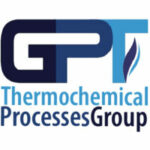ABOUT ME
Lorem ipsum dolor sit amet, consectetur adipiscing elit, sed do eiusmod tempor incididunt ut labore et dolore magna aliqua. Ut enim ad minim veniam, quis nostrud exercitation ullamco laboris nisi ut aliquip ex ea commodo consequat. Duis aute irure dolor in reprehenderit in voluptate velit esse cillum dolore eu fugiat nulla pariatur. Excepteur sint occaecat cupidatat non proident, sunt in culpa qui officia deserunt mollit anim id est laborum .Lorem ipsum dolor sit amet, consectetur.
Lorem ipsum dolor sit amet, consectetur adipiscing elit, sed do eiusmod tempor incididunt ut labore et dolore magna aliqua. Ut enim ad minim veniam, quis nostrud exercitation ullamco laboris nisi ut aliquip ex ea commodo consequat. Duis aute irure dolor in reprehenderit in voluptate velit esse cillum dolore eu fugiat nulla pariatur. Excepteur sint occaecat cupidatat non proident, sunt in culpa qui officia deserunt mollit anim id est laborum .Lorem ipsum dolor sit amet, consectetur.
Lorem ipsum dolor sit amet, consectetur adipiscing elit, sed do eiusmod tempor incididunt ut labore et dolore magna aliqua. Ut enim ad minim veniam, quis nostrud exercitation ullamco laboris nisi ut aliquip ex ea commodo consequat. Duis aute irure dolor in reprehenderit in voluptate velit esse cillum dolore eu fugiat nulla pariatur. Excepteur sint occaecat cupidatat non proident, sunt in culpa qui officia deserunt mollit anim id est laborum .Lorem ipsum dolor sit amet, consectetur.
PUBLICATIONS
2021
Romero, Enrique; García, Lucía; Ceamanos, Jesús
Moodle and Socrative quizzes as formative aids on theory teaching in a chemical engineering subject Journal Article
In: Education for Chemical Engineers, vol. 36, pp. 54–64, 2021, ISSN: 17497728.
@article{Romero2021,
title = {Moodle and Socrative quizzes as formative aids on theory teaching in a chemical engineering subject},
author = {Enrique Romero and Lucía García and Jesús Ceamanos},
doi = {10.1016/j.ece.2021.03.001},
issn = {17497728},
year = {2021},
date = {2021-07-01},
journal = {Education for Chemical Engineers},
volume = {36},
pages = {54--64},
publisher = {Elsevier B.V.},
abstract = {There is a majority opinion on the positive influence of using technologies in teaching. However, few studies account for their effect on students' final grades. Traditional theory teaching often shows a lack of students' motivation, engagement and self-efficacy. A way to improve these is to include quizzes, which may allow students to gain in skills acquisition feedback and self-regulation, and to control their own way to construct knowledge. The suggested methodology embeds quizzes and tests through two ICT, each one with a different strategy. One is the use of quick and real-time quizzes with Socrative, focused in promoting motivation and engagement in the classroom. The second is the use of tests with Moodle for a longer time scale (blocks of lessons). Both tests and quizzes were designed as formative activities: the students are able to gain feed-back, weaknesses identification and better programming of their work. Three ‘tools' (one Moodle test; three Socrative quizzes; no tool/only traditional teaching) were rotated among three different cohorts and blocks in a Chemical Engineering subject (n=49 students). Effects on the students' learning outcomes (grades) at the final theory exam were evaluated by blocks. A paired-data one-factor ANOVA test showed no significant statistical differences in using Moodle tests or Socrative quizzes or not. Some possible negative influences over data were identified and improvements for further study have been suggested. An intensification of quizzes and tests could be relevant. Although no significant improvement over grades was obtained, the use of both tools was positively valued for students and instructors. Surveys' results showed that the proposed methodology may create a more attractive and self-regulated educational environment. However, this study supports that students' previous perceptions about the tools may condition their final perceptions over the ICTs real aid for learning and their future academic outcomes.},
keywords = {},
pubstate = {published},
tppubtype = {article}
}
Raso, Raquel; García, Lucía; Ruiz, Joaquín; Oliva, Miriam; Arauzo, Jesús
Aqueous phase hydrogenolysis of glycerol over Ni/Al-Fe catalysts without external hydrogen addition Journal Article
In: Applied Catalysis B: Environmental, vol. 283, pp. 119598, 2021, ISSN: 09263373.
@article{Raso2021,
title = {Aqueous phase hydrogenolysis of glycerol over Ni/Al-Fe catalysts without external hydrogen addition},
author = {Raquel Raso and Lucía García and Joaquín Ruiz and Miriam Oliva and Jesús Arauzo},
doi = {10.1016/j.apcatb.2020.119598},
issn = {09263373},
year = {2021},
date = {2021-04-01},
journal = {Applied Catalysis B: Environmental},
volume = {283},
pages = {119598},
publisher = {Elsevier B.V.},
abstract = {The present work studied the aqueous phase hydrogenolysis (APH) of glycerol (a by-product of biodiesel manufacturing) without external hydrogen addition to produce value-added products. A series of catalysts based on 28 molar % of Ni were prepared through co-precipitation by changing the Al/Fe molar ratio. The calcined and used catalysts were characterized by several techniques (ICP-OES, N2-physisorption, XRD, H2-TPR, NH3-TPD, FESEM and STEM). This work examines the effects of the molar ratio of Al/Fe on the physicochemical characteristics of Ni/Al-Fe catalysts and during the APH of glycerol. All the catalysts showed low carbon yields to gases and high carbon yields to liquid products, mainly 1,2-propanediol, acetol and ethylene glycol. Ni/Al3Fe1 catalyst gave the best performance in the APH of glycerol: the highest glycerol conversion (42.31 %), carbon yield to gases (6.57 %) and carbon yield to liquids (30.45%). 1,2-propanediol was the liquid product with the highest carbon selectivity (70.89%).},
keywords = {},
pubstate = {published},
tppubtype = {article}
}
Lozano, Pablo; Simón, Ana I; García, Lucía; Ruiz, Joaquín; Oliva, Miriam; Arauzo, Jesús
Influence of the Ni-Co/Al-Mg catalyst loading in the continuous aqueous phase reforming of the bio-oil aqueous fraction Journal Article
In: Processes, vol. 9, no. 1, pp. 1–17, 2021, ISSN: 22279717.
@article{Lozano2021,
title = {Influence of the Ni-Co/Al-Mg catalyst loading in the continuous aqueous phase reforming of the bio-oil aqueous fraction},
author = {Pablo Lozano and Ana I Simón and Lucía García and Joaquín Ruiz and Miriam Oliva and Jesús Arauzo},
url = {https://doi.org/10.3390/pr9010081},
doi = {10.3390/pr9010081},
issn = {22279717},
year = {2021},
date = {2021-01-01},
journal = {Processes},
volume = {9},
number = {1},
pages = {1--17},
publisher = {MDPI AG},
abstract = {The effect of catalyst loading in the Aqueous Phase Reforming (APR) of bio-oil aqueous fraction has been studied with a Ni-Co/Al-Mg coprecipitated catalyst. Because of the high content of water in the bio-oil aqueous fraction, APR could be a useful process to convert this fraction into valuable products. Experiments of APR with continuous feeding of aqueous solution of acetol, butanol and acetic acid as the only compound, together with a simulated and a real aqueous fraction of bio-oil, were carried out. Liquid products in the liquid effluent of the APR model compounds were quantified and the reaction pathways were revised. The increase of catalyst loading produced an increase of gas production and a gas with higher alkanes content. Acetol was the compound with the highest reactivity while the conversion of acetic acid was very low. The presence of acetic acid in the feed caused catalyst deactivation.},
keywords = {},
pubstate = {published},
tppubtype = {article}
}
2020
Raso, Raquel; García, Lucia; Ruiz, Joaquín; Oliva, Miriam; Arauzo, Jesús
Study of Ni/Al-Fe Catalyst Stability in the Aqueous Phase Hydrogenolysis of Glycerol Journal Article
In: Catalysts 2020, Vol. 10, Page 1482, vol. 10, no. 12, pp. 1482, 2020, ISSN: 2073-4344.
@article{Raso2020,
title = {Study of Ni/Al-Fe Catalyst Stability in the Aqueous Phase Hydrogenolysis of Glycerol},
author = {Raquel Raso and Lucia García and Joaquín Ruiz and Miriam Oliva and Jesús Arauzo},
url = {https://www.mdpi.com/2073-4344/10/12/1482/htm https://www.mdpi.com/2073-4344/10/12/1482},
doi = {10.3390/CATAL10121482},
issn = {2073-4344},
year = {2020},
date = {2020-12-01},
journal = {Catalysts 2020, Vol. 10, Page 1482},
volume = {10},
number = {12},
pages = {1482},
publisher = {Multidisciplinary Digital Publishing Institute},
abstract = {The present work studied the stability and reusability of Ni/Al-Fe catalyst in the aqueous phase hydrogenolysis of glycerol without external hydrogen addition. The catalyst based on 28 molar % of Ni with 3/1 molar ratio of Al/Fe was prepared through co-precipitation. This catalyst presented the best performance in our last study which compares several Ni/Al-Fe catalysts with different molar ratios of Al/Fe. To see the influence of the pressurized water on the physicochemical characteristics of Ni/Al-Fe catalyst, a test of up to 9 h has been carried out. Fresh and used catalysts were characterized by various techniques: X-ray Diffraction (XRD), N2-physisorption, field emission scanning electron microscopy (FESEM) and STEM. Glycerol conversion and carbon yield to gases and liquids did not vary significantly when compared at 3 h and 9 h. Furthermore, the morphology of the catalyst remains stable after continuous recycling under severe hydrothermal conditions. The nickel rich phase of the catalyst, which was determined by XRD and scanning transmission electron microscopy (STEM) techniques, showed a stable size after 9 h under reaction.},
keywords = {},
pubstate = {published},
tppubtype = {article}
}
2018
García, Lucía; Valiente, Ana; Oliva, Miriam; Ruiz, Joaquín; Arauzo, Jesús
Influence of operating variables on the aqueous-phase reforming of glycerol over a Ni/Al coprecipitated catalyst Journal Article
In: International Journal of Hydrogen Energy, vol. 43, no. 45, pp. 20392–20407, 2018, ISSN: 03603199.
@article{Garcia2018,
title = {Influence of operating variables on the aqueous-phase reforming of glycerol over a Ni/Al coprecipitated catalyst},
author = {Lucía García and Ana Valiente and Miriam Oliva and Joaquín Ruiz and Jesús Arauzo},
doi = {10.1016/j.ijhydene.2018.09.119},
issn = {03603199},
year = {2018},
date = {2018-11-01},
journal = {International Journal of Hydrogen Energy},
volume = {43},
number = {45},
pages = {20392--20407},
publisher = {Elsevier Ltd},
abstract = {A systematic study focused on the aqueous-phase reforming of glycerol has been carried out in order to analyze the influence of several operating variables (system pressure, reaction temperature, glycerol content in feed, liquid feeding rate and catalyst weight/glycerol flow rate ratio) on the gas and liquid products. A continuous flow bench scale installation and a Ni/Al coprecipitated catalyst were employed. The system pressure was varied from 28 to 40 absolute bar, the reaction temperature was analyzed from 495 to 510 K, the glycerol content in the feed was studied from 2 to 10 wt%, the liquid feeding rate was changed from 0.5 to 3.0 mL/min and the catalyst weight/glycerol flow rate ratio varied from 10 to 40 g catalyst min/g glycerol. The main gas products obtained were H2, CO2 and CH4, while the main liquid products were 1,2-propanediol, ethylene glycol, acetol and ethanol. A W/mglycerol ratio of 40 g catalyst min/g glycerol, 34 bar, 500 K, 5 wt% glycerol and 1 mL/min, resulted in a high yield to H2 (6.8%), the highest yield to alkanes (10.7%), the highest 1,2-propanediol yield (0.20 g/g glycerol) and the highest ethylene glycol yield (0.11 g/g glycerol). The highest acetol yield (0.06 g/g glycerol) was obtained at 34 bar, 500 K, 5 wt% glycerol, 20 g catalyst min/g glycerol and 3 mL/min.},
keywords = {},
pubstate = {published},
tppubtype = {article}
}

